20 Neptune Facts | Remarkable Facts about the planet Neptune
Neptune is the eighth and final planet in its distance from the Sun. It has rings like Saturn, but they aren’t as well known or studied. It has the strongest winds in our solar system, but we still don’t know everything about this strange yet wonderful planet. Let’s look at some of the best Neptune facts you need to know.
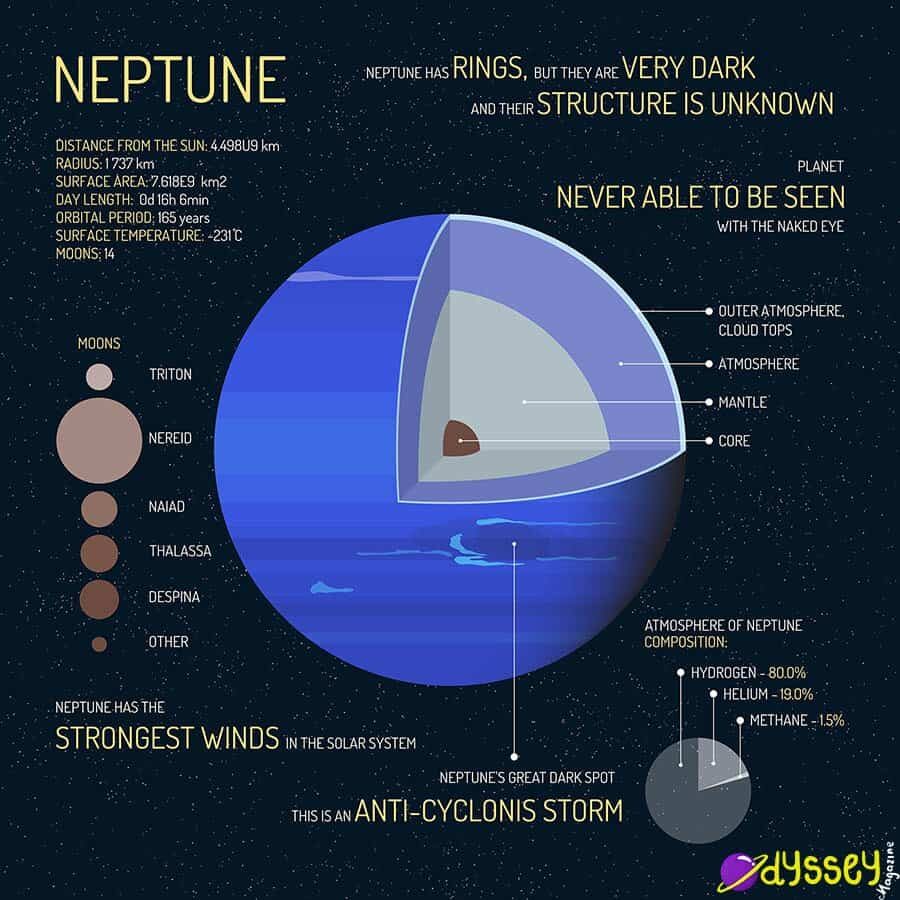
Neptune Facts
- Neptune is the eighth planet, making it the furthest planet from the Sun. There’s around 29 astronomical units (AU) between Neptune and the closest planet to the Sun, Mercury.
- Neptune has a radius of 15,299.4 miles (24,622 kilometers). This makes it the 4th largest planet, after Jupiter, Saturn and Uranus.
- Although the radius of Uranus is bigger than the radius of Neptune, Neptune still has a larger mass than Uranus.
- A day on Neptune is equal to 16 hours, 6 minutes and 36 seconds on Earth.
- Neptune has the longest year length of all of the planets, as it takes a long time to orbit the Sun. A year on Neptune is equal to 164.8 Earth years.
- Neptune travels around the Sun at a speed of 12,253 miles per hour (19,720 kilometers per hour).
- Neptune has an approximate surface gravity equal to 114% of that on Earth. That means a 200lb man would weigh 228lbs on Neptune.
- The name Neptune comes from the God of the Sea in Roman mythology. The Greek equivalent of Neptune is known as Poseidon.
- Neptune was discovered in 1846, and was the last of the planets to be discovered. However, Galileo did have Neptune marked down, but he didn’t declare it to be a planet.
- Neptune is approximately 2.8 billion miles (4.5 billion kilometers) away from the Sun – this is around 30x the distance between the Sun and Earth!
Neptune’s Core
At the very core of Neptune, we think that this must be similar to the core of the other planets made primarily of gas. This is generally made up of a rock, metals like nickel and iron, and solid ice, but it isn’t particularly wide. However, this does make up a lot of the mass of the planet.
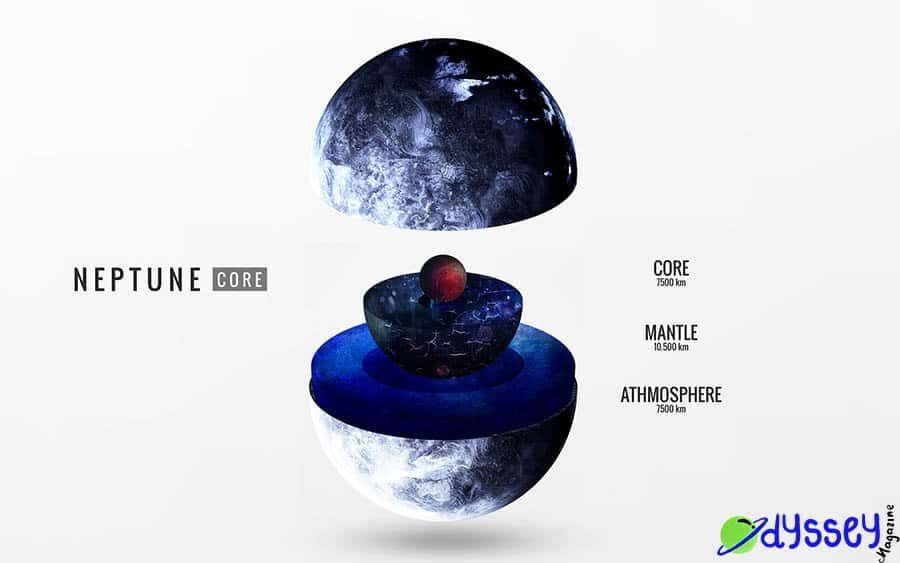
Outside of this solid core that Neptune has is a thicker mantle, primarily made up of ammonia, water and methane in a fluid liquid substance. We sometimes refer to this as a water-ammonia ionic ocean.
The Atmosphere on Neptune
The atmosphere on Neptune is actually very similar to that of the other gas planets Jupiter, Saturn and Uranus. It is made up primarily of hydrogen with a lesser amount of helium. But like Uranus, Neptune has a substantial amount of methane, which is where it gets it’s bluish color from. We aren’t exactly sure why Neptune is more Blue than Uranus, but it may be due to less methane, or another separate factor we aren’t aware of.
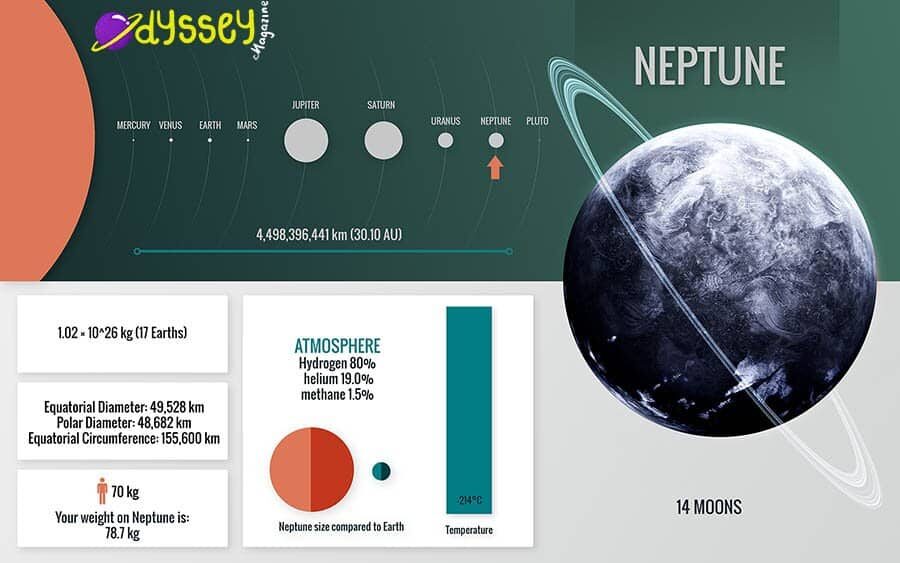
This atmosphere has clouds and storms similar to the Earth, but they are much more vicious and can reach speeds in excess of 1,000mph. We can actually see these storms on Neptune in the form of the Great Dark Spot, however this has disappeared over the last decade, which may mean that this storm has since ceased.
Neptune’s Moons
Neptune doesn’t have as many moons as the other gas planets, but it still has some impressive ones. The most well known moons of Neptune are;
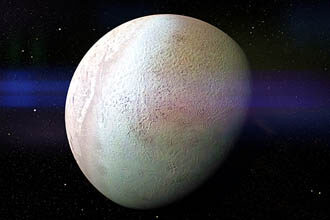
Triton
We know Triton for being the only larger moon that orbits it’s planet in the opposite direction to which it’s rotating! It’s Neptune’s biggest moon, too.
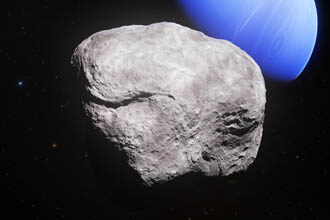
Hippocamp
Hippocamp is a super small moon, which takes around 24 hours to orbit Neptune. It’s one of Neptune’s newest moons, after previous Hubble footage was studied.
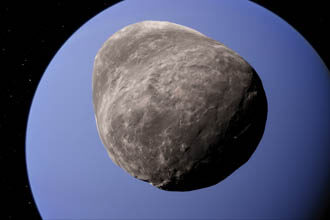
Proteus
Proteus is Neptune’s second largest moon, and is known for it’s strange shape. It takes it’s name from the Greek shape-changing sea God.
More Facts about the planet Neptune
- Neptune’s core is made up of a mixture of rock and ices, surrounded by a mantle of water, methane and ammonia.
- The atmosphere on Neptune is primarily made from hydrogen and helium, with a lesser amount of methane.
- The temperature of Neptune is an average of -200°c. This is warmer than Uranus, even though it’s further away from the Sun.
- Neptune has 14 moons that we know of, the largest of these moons being Triton.
- Triton is known for orbiting the planet in the opposite the planet rotates, and is the only large moon to do this.
- Neptune has five main rings, which makes up a fairly simple ring system. Simpler than both Uranus and Saturn, which has the most extensive ring system.
- There has only been one spacecraft that has been to Neptune – the Voyager 2, back in 1989.
- Neptune has the worst storms of any planet, reaching speeds in excess of 1,300mph (2,200kmph).
- The most famous storm on Neptune is known as the Great Dark Spot, which was about the same size as the Earth.
- Neptune is the only planet that isn’t visible without using a telescope, as it’s so far away.
Common Questions about Neptune
Who discovered Neptune?
The official discovery of Neptune was made by Urbain Le Verrier in 1846, although astronomer Johann Gottfried Galle was actually the first person to observe the planet with Le Verrier’s theoretical directions. However, Englishman John Adams actually had Neptune in the same positioning as Le Verrier, so many people say that they both founded Neptune. Of course, before this Neptune was observed by other astronomers, but none of them knew that Neptune was actually a planet and not a distant star.
Is Neptune a gas giant?
Back in the 1990s, Jupiter, Saturn, Uranus and Neptune were all referred to as the gas giants. And this is right, as they are all made up of gas, as opposed to the terrestrial planets. However, astronomers thought there was the need to differentiate Uranus and Neptune from Jupiter and Saturn, as they have much more ice. So, now we generally refer to these two as the “ice Giants”, and Jupiter and Saturn as the “gas giants”.
Can Neptune be seen at night without a telescope?
Neptune cannot be seen at night without a telescope. This is because it is more than 2.7 million miles away from the Earth and it isn’t bright enough for us to see it unaided.
Is there water on Neptune?
Yes, there is water on Neptune – in fact, the planet itself is made up of a decent amount of water. However, this water is at temperatures of more than 1700°c and is mixed with ammonia and methane.
Will Neptune and Pluto collide?
It’s well known that although Pluto is usually further out from the Sun than Neptune, there are times when Pluto is actually closer to the Sun than the planet. So, this makes people ask; will they ever collide? The answer is that no, they won’t collide because they aren’t actually on the same path, so they could never collide.
The Sum Up
Neptune is the furthest planet away from the Sun, and we’ve only ever had one space mission make it that far. So, much of it is still a mystery and based on assumptions that we know about the other planets. However, in the coming years it’s sure that we will learn more and more about the planet Neptune, which might give us more information about this great planet.